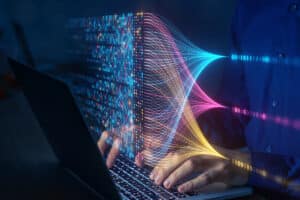The path to Cloud migration for enterprise organizations can appear long, often convoluted, and beset with occasional potholes, pitfalls and perhaps even a few pitchforks. The most prudent organizations often gravitate towards professional services consultants and service providers to manage their migration journeys.
But even with the overseeing eye of a migration specialist, it is imperative that C-Suite boardroom staff, IT managers, and the software and data engineering teams that work in these organizations, understand the trends shaping the market.
This article will consider some of these defining factors shaping the way enterprise organizations enacting their migration to the Cloud must act, react – and occasionally push back.
Locate, migrate, also wait
We know that AWS CEO Adam Selipsky has said that although more workloads are moving to the Cloud, not all will migrate.
For today’s hybrid environments, companies need the ability to determine the right mix of hybrid Cloud and workload placement based on a host of factors (data governance, security and compliance, latency considerations, specific Cloud optimizations and so on), with the flexibility and control that they’ve come to expect for any modern service.
Getting that locate, migrate, but also wait (and then subsequently iterate) factor right is a fine balance. Doing so in the context of Cloud migration directed at application and data services that are part of mission-critical systems like SAP always includes an inherent level of complexity; knowing the number, shape, size and color of the Lego blocks being shifted around is crucial.
A key current and forward-facing trend shaping the IT market today is the rise of low-code/no-code development tools. SAP itself used its TechEd 2021 conference to announce a unified low-code/no-code development solution that promises to offer a gateway inward for citizen developers to start contributing to the build process for enterprise applications.
As Juergen Mueller, CTO and Member of the Executive Board at SAP SE, said in line with the news: “Accessing the right talent, skills and capabilities for this journey can be a challenge. SAP’s announcements not only empower citizen developers but also support professional developers in their continuous learning efforts so customers can innovate today and continue building the foundation for success tomorrow.”
Citizen [insert role here] engineers
While there are naysayers who bemoan the very possibility of citizen developers (and indeed citizen data scientists, citizen AI modelers and citizen [insert role here] engineers of any kind), the weight of industry momentum is behind the move to put these now more heavily abstracted software tools into the hands of more stakeholders.
On the SAP low-code/no-code toolset specifically, this runs on SAP’s Business Technology Platform (BTP), and this of course also encapsulates the option to use the AppGyver development environment and SAP Business Application Studio to create, deploy and manage enterprise software functionality in potentially very exciting new ways.
The road to Infrastructure as Code
In terms of other trends shaping the market, we can point to the future of shift-left security through infrastructure as Code.
Using Infrastructure as Code (IaC), software engineers and operations teams can automatically manage, monitor and provide resources, rather than having to manually configure discrete hardware devices and operating systems. Once deployed, IaC is similar to software programming scripts used to automate IT processes.
As the use of this technology becomes part of live production SAP environments, we can reasonably expect more versatile and adaptive provisioning and deployment processes to take place. But versatility and adaptability aside, the security and safety aspect of this technology layer will be its key identifier.
We can call this a shift left for security as we can now look for Cloud deployment issues before they actually occur in live production systems. Through IaC, we can detect security risks and vulnerabilities in Cloud resource configurations long before they are actually deployed.
Accelerators, automators, integrators
Outside of any specific SAP or Cloud platform layer developments, the wider IT market appears to still be on an upward trajectory designed to encapsulate as many uses of automation and acceleration technology as possible.
Spanning everything from ‘basic’ use case templates, onward to more advanced industry-specific accelerators and upwards to the higher tiers of Artificial Intelligence (AI) and Machine Learning (ML) now being developed, we should not ignore the speed and depth at which algorithmic power is still advancing.
In addition, innovation continues at a massive clip among the hyperscalers. This year look for innovations beyond just automation at the infrastructure layer. New functional capabilities will be evolving. For example, for SAP systems the automation and innovation at the infrastructure layer is pretty much done and dusted but the opportunities that lie further up the stack could be game-changers for a business. Think strategic, operational and tactical forecasting tools fed by the incredible amounts of data that the hyperscalers have access to as just one example.
Look before you Quantum Leap
With the possibility of quantum computing (or at least the perhaps more achievable Quantum as a Service) almost within reach, the next tier of our enterprise IT development will no doubt be characterized by an inherent level of complexity not thought possible back at the turn of the millennium.
Going forward, we need to be careful, systematic and strategic about what we migrate when, where, when and why, but that’s our core raison d’être at Lemongrass. We are here to provide the care, consideration, control and confidence factor on the road to better, wider and greater business outcomes for all.




